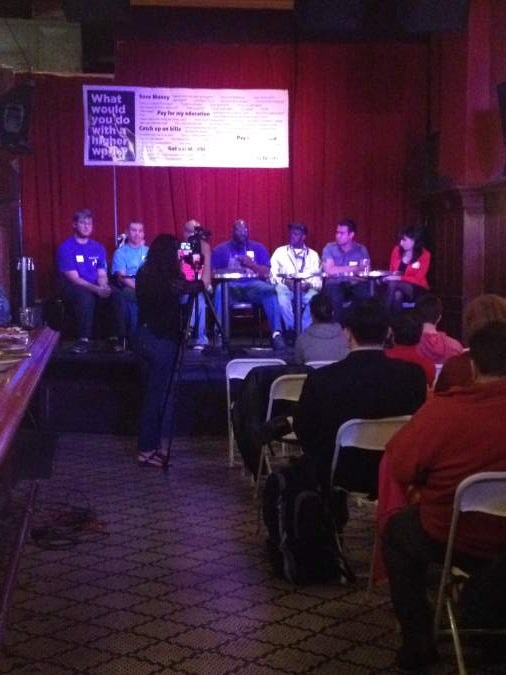Eaters may come to Blake Island for the salmon bake, but they stay for the lively story-and-dance show featuring Coast Salish legends and – this year – a new mask.
Argosy Cruises, which operates the popular Tillicum Village excursion, commissioned a new Crooked Beak of Heaven mask for its 2013 season. According to Argosy spokeswoman Maureen Black, it took an anonymous carver six months to carve the massive headdress from a single piece of cedar. During the off-season, Argosy also arranged for the repair of its decade-old Big Beak and Hamatsa Raven masks.
“Masks that are used for performances tend to get a lot more wear and tear than those for ‘display’,” Black explains. “It’s the internal pieces that tend to break – i.e. the mechanisms and pulls to clap the beaks.”
Although Blake Island is a short float from Seattle, Tillicum Village has interpreted an array of Coast Salish traditions since caterer Bill Hewitt developed the tourist attraction. Hewitt in 1962 furnished a five-acre corner of the state park with a longhouse and totem poles associated with tribes from much further up the coast.
The dance masks come from the Kwakwaka’wakw, or Kwakiutl, whose tribal lands are located on the northern end of Vancouver Island. In Kwakwaka’wakw culture, bird masks are used in a coming-of-age ceremony that emphasizes harmony and balance.
“The appearance of these masks helps to calm and tame the initiate Hamatsa dancer, who has been possessed by the Cannibal Spirit,” Bill Holm wrote in a passage quoted on the Burke Museum’s website. “The dancer, hidden by a long fringe of red-dyed cedar bark, imitates the high-stepping actions of the bird, shouts the bird’s call, and snaps the hinged beak loudly at important points of the dance.”
All that snapping is rough on Argosy’s mask collection, but it’s also a sound effect so compelling that it inevitably distracts diners from their individual apple pies.
“The masks are considered the most theatrical of all of the Coast Salish tribes,” Black says.









